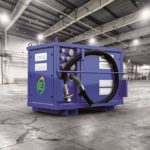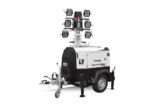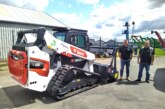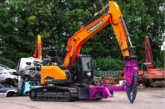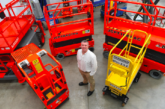From reduced emissions to zero emissions: With its E-Pack and HVO-compatible engines, Tadano is already offering solutions for environmentally friendly crane operation.
Tadano has explicitly made environmental protection and sustainability a priority: “In addition to supporting the recommendations of the Task Force on Climate-related Financial Disclosures (TCFD), the Tadano Group has established the clear goal that by 2030, we will reduce CO2 emissions from our business activities worldwide by 25% and our products by 35%,” Tadano Ltd. Chief Executive Officer Toshiaki Ujiie announces. Accordingly, Tadano’s fleet will be gradually converted to engine technologies with zero emissions or at least significantly reduced emissions. The company has long been setting the stage for this move – one example is the ESTA-award-winning E-Pack, which makes local zero-emission crane operation possible.
This electro-hydraulic unit, which is intended to be connected to 400 V outlets with 63 A or 32 A, features an integrated 32-kW electric motor that enables Tadano AC 3.045-1 City and AC 4.080-1 cranes to work whisper-free and with zero emissions, as well as without any vibrations that can be noticed by the crane operator. “The E-Pack will soon be usable with additional crane models,” All Terrain Crane Product Line Vice President Dr. Frank Schröder announces. The vital advantage for Tadano customers is that the E-Pack can be used for various models in their fleets. This makes investing in this environmentally friendly technology a particularly cost-effective choice.
The unit, which is available as an option, is recommended for crane jobs inside buildings, in dense urban areas, and at night in residential areas – in other words, anywhere where companies may have to adhere to stricter emission and noise requirements that make conventional crane operation with a diesel engine impossible. “We’re already assuming that the number of requests for quotations asking for zero-emission operation, or at least significantly reduced emissions, will keep growing in the future. In fact, that’s already the case in the Netherlands and Scandinavia. And with the E-Pack, our customers will be perfectly prepared,” Dr. Frank Schröder highlights.
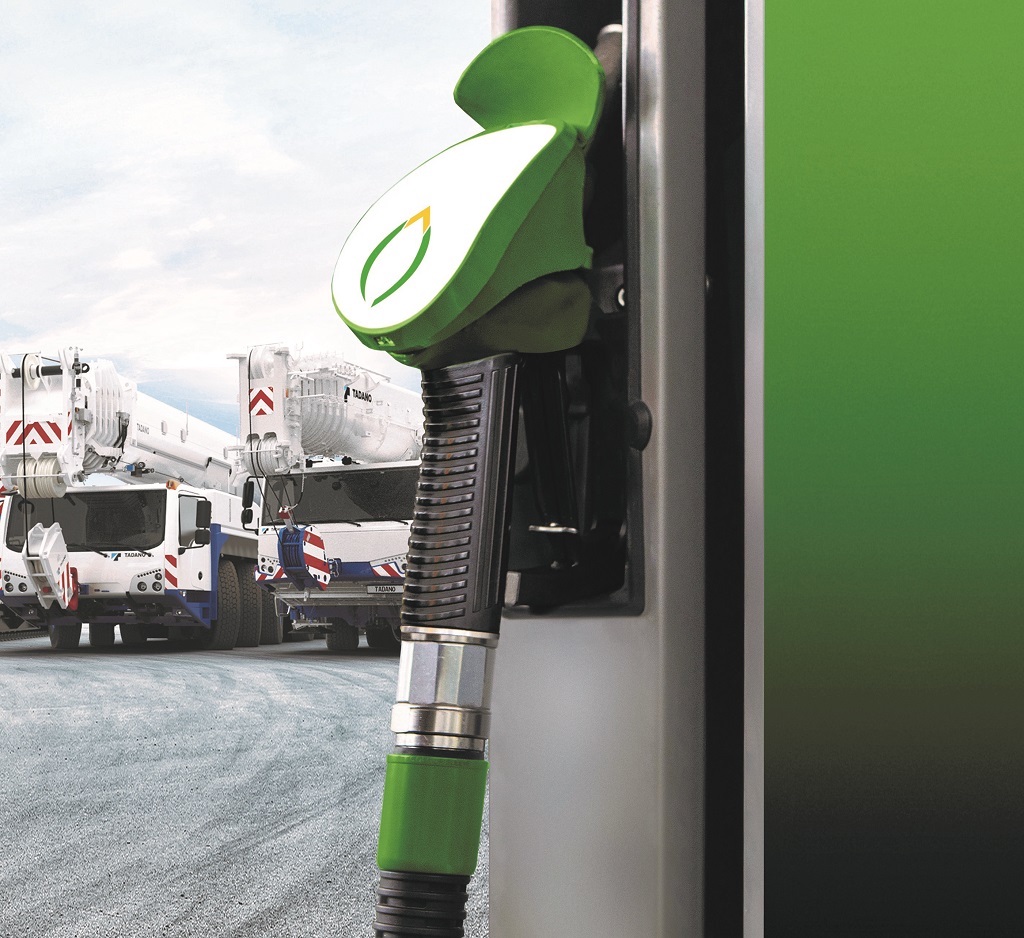
Compatibility with reduced-emission fuels
This is also the case with the ability of a large number of Tadano cranes to run on alternative diesel fuels. For the European market, this specifically means that all Tadano HK superstructure engines, all CC lattice boom crawler cranes, the GTC1800EX telescopic boom crawler crane, and nearly every all terrain crane can be operated with paraffinic and synthetically produced diesel fuels in conformity with DIN 15940 without any modifications. This includes reduced-emission fuels such as HVO, GtL, and BtL.
Hydrotreated vegetable oil (HVO) in particular is a very promising solution for environmental protection and fighting against climate change. It is a renewable fuel based on vegetable oils and animal fats, which, for example, can be obtained as waste products from food production. HVO has almost the same energy density as fossil diesel but is virtually carbon-neutral from production to combustion.
“Even if HVO is not available everywhere, we consider it an effective option for reducing particulate matter and greenhouse gas emissions in existing vehicles and allowing for operations with significantly reduced emissions throughout the entire lifecycle of our products and beyond. That’s why Tadano will be gradually switching its plants over to renewable fuels so as to keep the emissions from our cranes as low as possible starting from the actual production process,” highlights Tadano Demag GmbH and Tadano Faun GmbH President & CEO Jens Ennen. As of this writing, Tadano is working on additional concrete measures regarding environmentally friendly engine technologies for mobile cranes that will help fight climate change and will be providing extensive information on them at the upcoming bauma.

